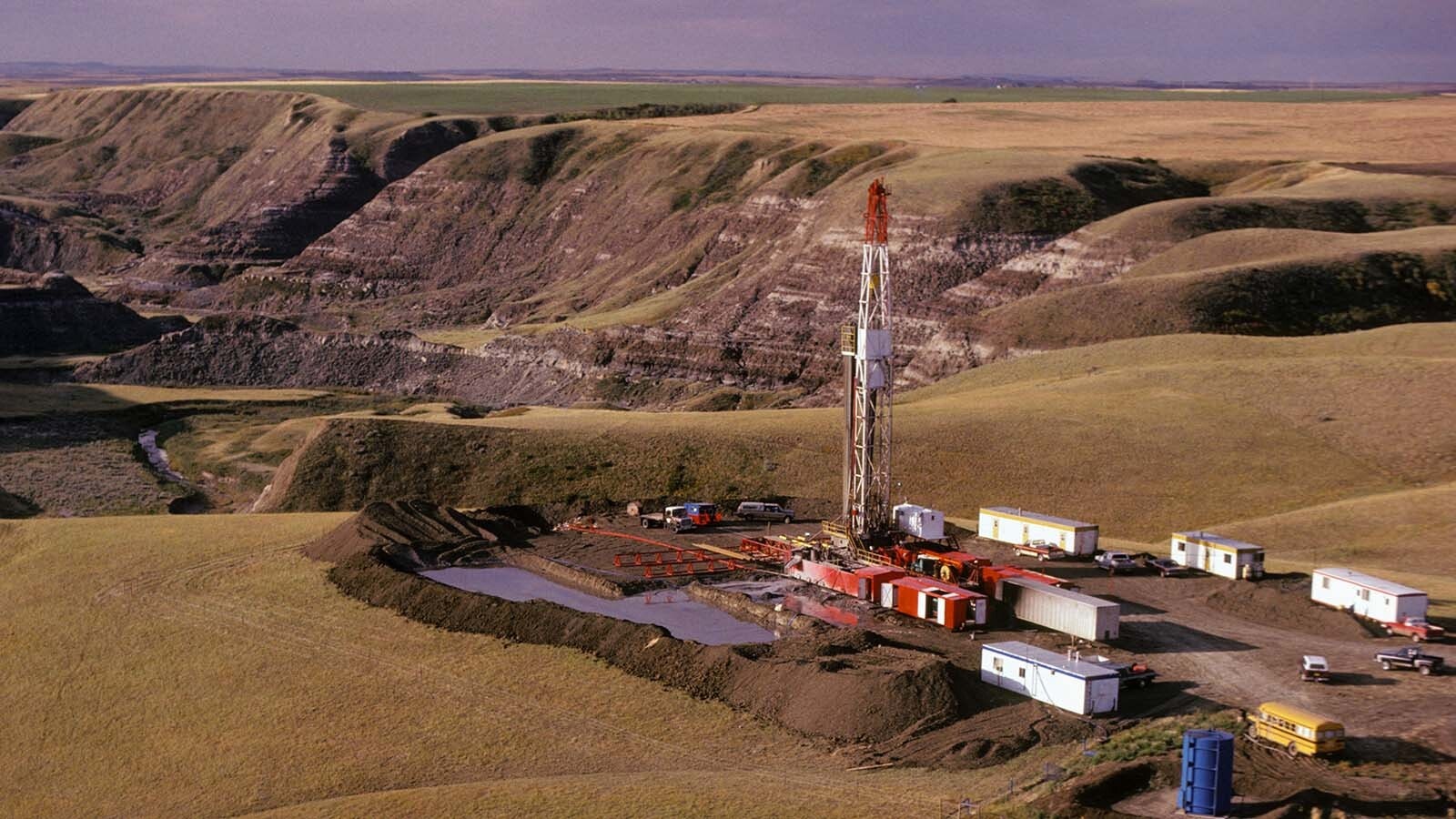The coal industry is preparing for an onslaught of new EPA regulations over the next several months likely to speed up retirement of coal-fired generation plants.
The rules include what’s called the “Good Neighbor” provision, which would require upwind states to ensure that their air pollution doesn’t impact downwind states’ ability to meet air quality standards.
Researchers say that coming into compliance with the regulations would likely be uneconomical for many coal power plants.
Travis Deti, executive director of the Wyoming Mining Association, told Cowboy State Daily that President Joe Biden has been explicit in his intent to eliminate all or most of the U.S. coal-fired generation. The industry, Deti said, has been anticipating a hostile regulatory environment.
“This is just using the regulatory apparatus to keep coal in the ground, and it will make our grid less reliable. It’s a political move and not unexpected,” Deti said.
Destabilizing Grids
According to economic estimates by Rhodium Group, an independent research provider, 30 gigawatts to 60 gigawatts of coal-fired electrical generation will be taken offline by 2030, and that’s in addition to 60 gigawatts of retirements already in the works. There is currently about 220 gigawatts of capacity operating today, supplying 20% of the nation’s electricity.
Much of the lost coal-fired electricity generation will be made up for with new wind and solar farms, and the so-called Inflation Reduction Act provides billions in funding for renewable energy projects. As more intermittent, unreliable generation resources are added to the grid, utilities are facing greater struggles to keep electricity flowing to homes and businesses.
The problem could become even worse as more people switch to electric cars and natural gas is replaced with heating and cooking sources powered with electricity.
In its 2022 Long-Term Reliability Assessment, the North American Electric Reliability Corporation rated most of the West and Midwest at elevated or high risk for resource inadequacy during high demand, meaning that during times of high or low temperatures, large sections of the grid could experience rolling blackouts.
According to a study released last week by the PMJ Interconnection, which is a very large grid serving about 65 million people in the East, the measure of spare power supplies versus peak demand on that grid is expected to fall from 26% this year to 15% by 2030.
Storage Problems
Paul Bonifas, an energy consultant who has worked in partnerships with the University of Wyoming, told Cowboy State Daily that when wind and solar are producing electricity, they’re cheap and affordable, and, while there are carbon dioxide emissions in the manufacturing of the components, shipping and construction of wind and solar farms, they don’t produce carbon dioxide emissions while they’re producing electricity.
“The issue with renewables isn’t that the technology doesn’t work, the technology works fine, it works great,” Bonifas said.
The problem is that there’s no cost-effective reliable way to store energy. A very large battery facility could store enough power for up to 12 hours, but periods in which there’s no wind or sun can be longer than that.
Energy expert Alex Epstein calculated how much it would take to store up enough energy in batteries to power the globe for three days. Based on the price of Tesla Megapacks, it would cost $590 trillion, which is six times the global GDP. And the batteries have to be replaced about every 10 to 20 years.
Bonifas said that you really need to look at global figures, because to make all this work would require wind and solar farms producing energy across the globe.
“The idea is the sun’s always shining somewhere. So if you can coat the entire planet with solar panels, and run transmission lines through the oceans, then you always have power. Okay, but let’s talk about something realistic,” Bonifas said.
The Kool-Aid
Dan Kish, senior fellow with the Institute of Energy Research, a nonprofit doing research on government regulation and global energy markets, told Cowboy State Daily that the federal agencies that should be alarmed at the studies showing increasing grid instability are just ignoring the danger.
“They’ve all drunk the Kool Aid, and they just keep taking us down this road,” Kish said.
Kish said these newest regulations are part of a strategy that seeks to place expensive rules over every aspect of a coal-fired power plant’s operations.
“It’s death by a thousand cuts. And meanwhile, China is building two plants every week, which is going to bury any kind of emissions reductions we have here in the United States,” Kish said.
Dispatchable Power
A January study by Energy Innovation, a renewable advocacy and climate policy think tank, found that the only coal-fired power plant in the United States that’s cheaper to operate than to replace with wind and solar farms is the Dry Fork Station about 10 miles north of Gillette.
Like many studies concluding that wind and solar are cheaper, the Energy Innovation study uses levelized cost of energy(LCOE) in its calculations, which the U.S. Energy Information Administration has said is “misleading” when comparing costs across technologies, because it doesn’t factor in the cost of dealing with intermittency of wind and solar.
Bonifas said that when you remove 120 gigawatts of coal-fired generation, you can’t just replace it with 120 gigawatts of wind and solar. You have to have a dispatchable source of energy – energy sources from natural gas and nuclear that are ready to go whenever they’re needed – that supplies the 120 gigawatts lost capacity from coal whenever the wind isn’t blowing and the sun isn’t shining.
“Since you don’t control when renewables ramp down, you just have to have the exact same capacity of dispatchable energy as you would have if you had no renewables,” Bonifas said.
That means basically you’re paying for the dispatchable power and a lot of supplementary wind and solar. The costs to the consumer will then increase the more a grid adds wind and solar.
Subsidies And Favors
Deti said that wind and solar wouldn’t make any economic sense without the federal subsidies the industries are receiving and the favorable regulatory environment they have. The Bureau of Land Management is laying out policies to make it easier for wind and solar projects to be built on federal land, while making it harder for oil, gas, and coal operators to produce on those public lands.
“The only reason we are where we are with wind and solar right now is because of massive federal subsidies, massive tax benefits, tax breaks, and regulatory favor,” Deti said.
Meanwhile, China and India are building more coal-generation capacity than the U.S. is shutting down, which Deti said is frustrating for American coal companies.
“They’re gonna continue to burn coal, because they realize that coal is abundant, reliable and affordable for their populations. It’s a way to bring their people out of poverty and to provide reliable electricity. In the United States, we seem to have forgotten that lesson,” Deti said.





